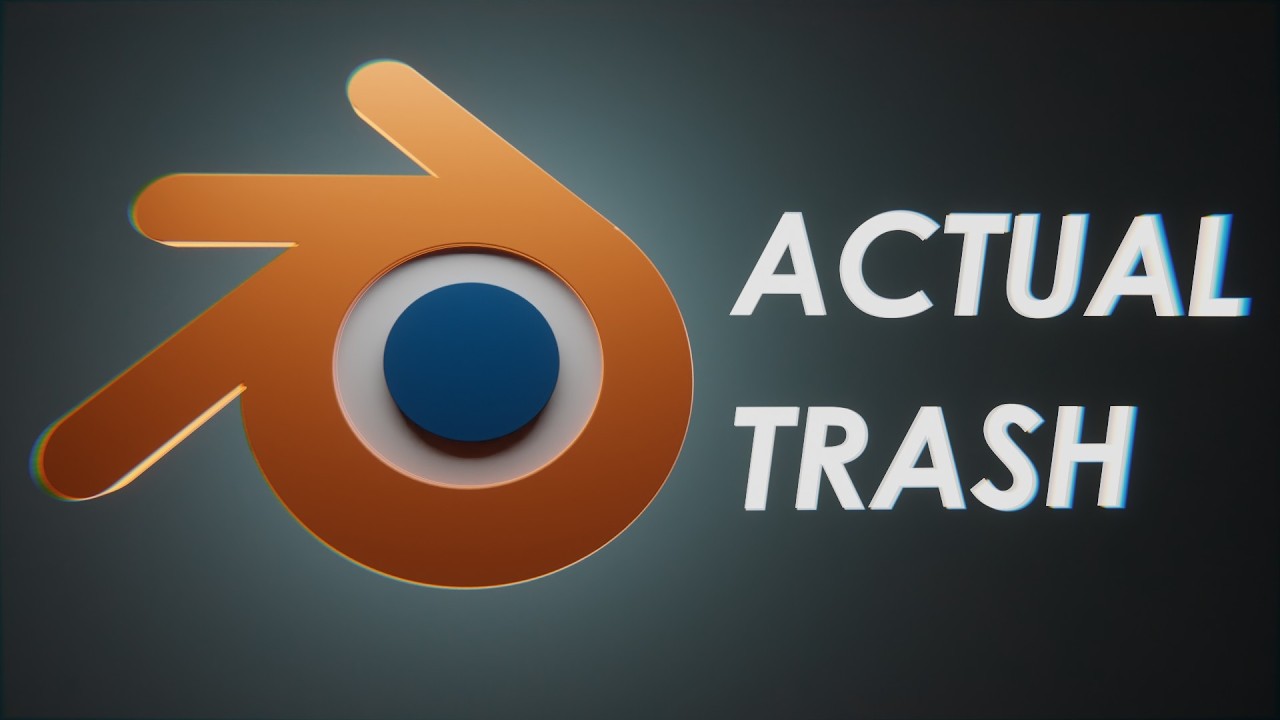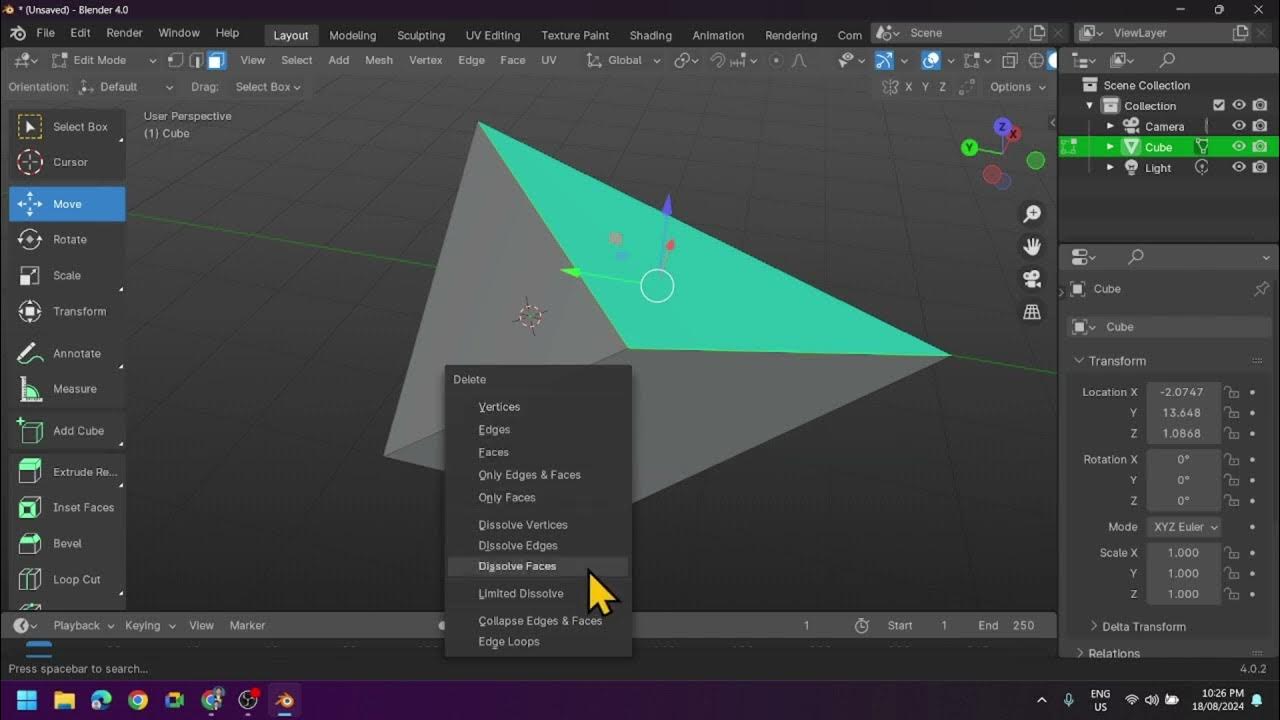Why are 3d Assets a Problem?
Summary
TLDRThis video explores the problematic rise of 3D asset usage, particularly in Blender, and how it can hinder artists' growth and creativity. While assets provide convenience, they can lead to stagnation, as artists may stop developing their skills. The video also touches on legal concerns, stressing the importance of respecting copyright and fair use guidelines. Blender's popularity among hobbyists exacerbates this issue, as casual users are more likely to rely on assets. The narrator offers guidelines for responsibly using assets to maintain artistic development and creativity, while promoting professional learning through platforms like Skillshare.
Takeaways
- 😀 Asset usage in 3D design can be problematic, especially for new artists, as it can hinder learning and creativity.
- 😀 Over-reliance on assets can cause a lack of personal fulfillment and stagnate an artist's growth, as the artist may not be adding anything original.
- 😀 Many users of 3D assets may unknowingly commit fraud or violate copyright laws, as assets can often be used illegally without proper permissions or credits.
- 😀 To legally use assets, artists must follow fair use guidelines, such as not profiting directly from the asset and ensuring the work is transformative.
- 😀 Assets should be used cautiously, particularly for beginners, as overuse can make it harder to develop foundational skills in 3D modeling.
- 😀 Blender users, being more inclined to hobbyist-level usage, are more likely to rely on assets, making Blender's community more susceptible to asset-related problems compared to other 3D software communities.
- 😀 Blender's growing popularity, especially from 2021 onward, has paralleled an increase in asset usage, highlighting the correlation between the two.
- 😀 While asset downloads increase as Blender's popularity rises, it's important to understand that correlation doesn’t necessarily imply causality—other internal factors might be at play.
- 😀 Professional 3D artists also use assets, but they do so responsibly, understanding when and how to use them to save time without sacrificing quality or personal development.
- 😀 A proposed system for using assets responsibly includes: avoiding assets in the first couple of years, using assets you can create yourself, and always following ethical guidelines for asset usage.
- 😀 Skillshare is recommended as a valuable resource for structured learning, offering courses that help artists develop their skills faster and more effectively, without over-relying on assets.
Q & A
Why is the use of 3D assets considered problematic for artists?
-The primary issue with using 3D assets is that it can hinder an artist's development. When artists rely too much on pre-made assets, they bypass critical learning steps, such as modeling, texturing, and lighting, leading to stagnation in skill development and a lack of fulfillment in their creative process.
How does using assets affect the creativity of 3D artists?
-Using assets can diminish creativity by encouraging artists to assemble existing components rather than creating original work. This can lead to feelings of unfulfillment, as artists are not fully engaging in the creative process, ultimately stalling their progress and motivation.
What legal risks are associated with using 3D assets in projects?
-There are legal risks associated with using 3D assets without properly understanding copyright laws. If assets are copyrighted, they must meet the criteria for 'fair use,' which includes being transformative and not competing with the original creator's work. Using assets improperly could potentially result in copyright infringement.
How can artists ensure they are using assets legally and ethically?
-To use assets legally and ethically, artists should always check the licensing terms of the assets they are using, obtain permission if necessary, and credit the original creators. Following these guidelines ensures that artists respect intellectual property and avoid legal issues.
Why is Blender uniquely affected by the overuse of 3D assets?
-Blender is particularly affected because it has a large base of hobbyists who often turn to assets for convenience. Since Blender is free and accessible, many users do not have the professional pressure or need to develop advanced 3D skills, making them more likely to use assets extensively, which can inhibit their creative growth.
What does the rise in Blender’s popularity mean for asset usage?
-Blender's popularity has led to a significant increase in the use of 3D assets, especially among non-professional users. As more hobbyists flock to Blender, they often rely on assets to create polished work quickly without learning the foundational skills needed for advanced 3D artistry.
How does the use of assets differ between hobbyists and professional 3D artists?
-Hobbyists are more likely to overuse assets because they lack the pressure to produce original work or meet professional standards. In contrast, professional artists typically use assets strategically, often to save time on complex tasks or for specific purposes, without sacrificing the creativity and technical skills they have developed.
What system does the speaker suggest for responsible asset usage?
-The speaker suggests a system where artists should: 1) Follow legal and ethical guidelines regarding asset use, 2) Limit the use of assets during the first couple of years to ensure they develop fundamental skills, and 3) Create their own assets whenever possible to avoid becoming overly reliant on external resources.
What role does Skillshare play in helping 3D artists improve their skills?
-Skillshare provides a structured learning environment with classes taught by industry professionals. This helps artists accelerate their learning, develop essential skills, and reduce their reliance on assets. Skillshare offers learning paths that guide users from beginners to more advanced levels in specific areas, including Blender and other creative disciplines.
What are the main benefits of limiting asset usage early in a 3D artist’s career?
-Limiting asset usage early on helps artists build a strong foundation in 3D skills like modeling, texturing, and lighting. It encourages them to create original work, which fosters creativity, technical proficiency, and a deeper understanding of the 3D process. Overusing assets too early can result in a plateau where an artist's growth stagnates.
Outlines

此内容仅限付费用户访问。 请升级后访问。
立即升级Mindmap

此内容仅限付费用户访问。 请升级后访问。
立即升级Keywords

此内容仅限付费用户访问。 请升级后访问。
立即升级Highlights

此内容仅限付费用户访问。 请升级后访问。
立即升级Transcripts

此内容仅限付费用户访问。 请升级后访问。
立即升级5.0 / 5 (0 votes)






